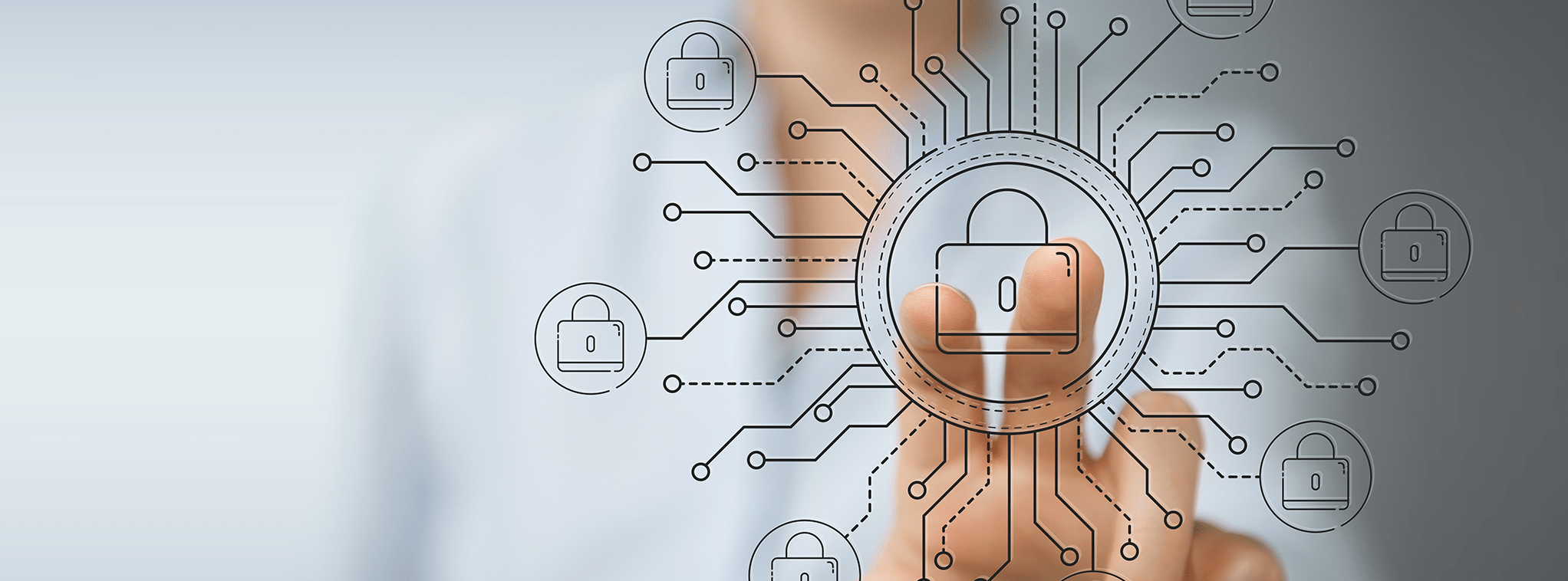In customer-facing industries like hospitality, tourism, and retail, promising secure data and quality service is expected. Poor service is often the reason customers don’t return. In the reverse, when the service exceeds expectations, companies separate themselves from their competition.
To stand out, companies that proactively monitor their IT systems are one step closer to providing an exceptional guest experience. The goal — to do such a thorough job in securing company and guest data that the customer never has to question whether they should hand over a credit card, driver’s license, or other personal information.
The Health of Technology and Computer Systems is Monitored in Layers
Information that originates from the end-user and flows through a local company’s system to a larger corporate database runs through many different back-end systems and can be accessed from multiple computers.
Monitoring individual computers for potential security threats is fairly simple. Generally, a user knows when something isn’t working quite right, but pinpointing the problem can be tricky. Beyond the surface, there are layers — complicated layers — of technology that are susceptible to security breaches that could jeopardize a company’s intellectual property or even their customer’s private information which was provided under the guise that it was secure.
There are system applications and services that support the computer’s performance, operating systems and firmware, servers, and data storage systems. All layers of this complex system, from the computer, used to check a guest in or ring up a customer’s purchase, to the data center that hosts all of the stored information, can be targeted in different ways, so they must all be monitored and examined frequently to identify the root of any and all potential threats.1
Tools are available to help spot errors and service failures before they start to impact users, but business owners should make sure a team is established to monitor the activity, capacity, and overall health of servers, hosts, and applications on-premise and in the cloud.
In the hospitality, retail, and tourism industries, Point of Sale (POS) systems are widely known to be a targeted source from which to steal data. A report by Lodging Magazine2 noted that out of 21 data breaches among high-profile hotel companies from 2010 to 2017, 20 were due to threats against POS systems.
So, what does it look like to proactively monitor computers and technology used in day-to-day business?
How to Ensure Secure Data and Remain a Trustworthy Brand
When a business collects private data from its customers, they have an inherent ethical responsibility to guard that data. Below are five best practices for securing data and promising customers their information is safe:
-
- Secure the first layer — the computers: Start at step one by installing a firewall, network monitoring, anti-malware, and traffic filtering services such as Bitdefender, Norton, or McAfee. Keeping this security software up to date is an easy and simple way to protect your business from potential threats.
- Train your employees on the importance of data security3: When onboarding new employees, provide them an overview of cybersecurity and what they should be on the lookout for. Phishing emails have become increasingly more sophisticated and should be taken seriously. Reportedly, the average data breach among U.S. companies cost the business $73,000.4 More than half of those breaches resulted from accessing the company’s network using existing systems and often stealing an employee’s credentials. This is often done through undetectable phishing emails. For this reason, employees should be encouraged to only open emails they trust and report any suspicious emails to their IT team.
- Put an extra layer of security — or two — around your customer’s data: Restricting access to personal information; Destroying confidential data before disposing of it; Always encrypting payment card information. Always adhere to relevant regulations, such as PCI DSS. Establish second-factor authentication for formerly in-person processes, such as manual phone calls, a system of shared secrets or other authentication controls relevant to the formerly in-person process.5
- Test the behaviors of a hacker: Being proactive is key. Just like a baseball team practices over and over before their big game or the way the military runs real-life training programs before heading to battle, IT teams can conduct tests against their organization’s security defense systems. By identifying the moves a hacker may make and running the same actions against your system, IT teams may come across areas of potential concern that they can then secure even further.
- Put guest experience at the top of your priority list: Things happen quickly in the world of complex computer systems and data which means front-of-house employees shouldn’t be the only ones focused on providing a positive guest experience. IT teams should give all customer experience concerns the same amount of attention, whether it affects thousands of people or just a handful.6 Employers should feel confident in giving their teams the autonomy to solve technical problems quickly without red tape blocking the way. Double-check to see if your approval process is quick enough to adapt to threats around the clock because hackers don’t only work nine to five.
Technology may not be the first thing a customer sees or even thinks about when entering a hotel, restaurant, or medical care facility, but these systems play a major role in their overall satisfaction with a brand or experience. Monitoring your systems regularly and investing in technology to protect your customer data will pay off in the long run.
1 Comparitech, Sept. 29, 2020,
2 Lodging Magazine, July 31, 2017, https://lodgingmagazine.com/safeguarding-a-hotel-property-against-cyber-attacks/
3 GlobalTrade Magazine, October 20, 2020, https://www.globaltrademag.com/e-commerce-and-data-breaching-the-next-cyberthreat/
4 Inc.com, Jan. 17, 2020, https://www.inc.com/kevin-j-ryan/cybersecurity-data-breaches-hacks-how-ceo-use-tech-survey.html
5 EHL Insights, https://hospitalityinsights.ehl.edu/data-security-in-hospitality-best-practices
6 LMS Online, https://lmsonline.com/insight/experience-support-technology/
